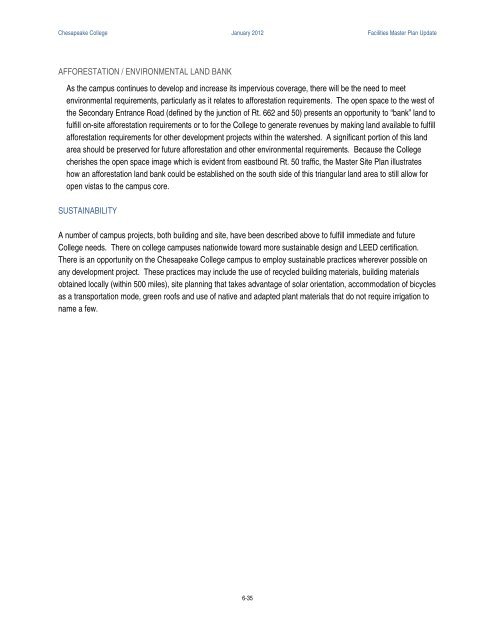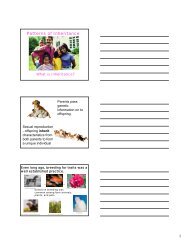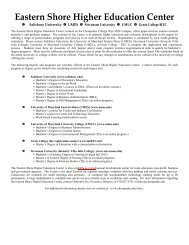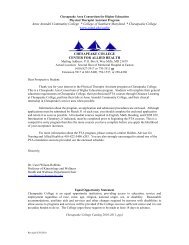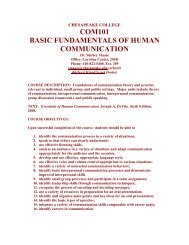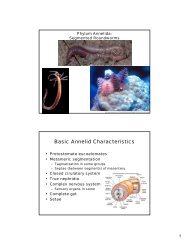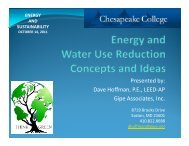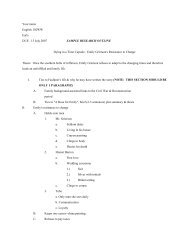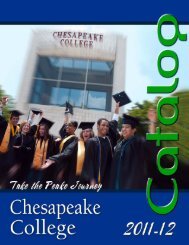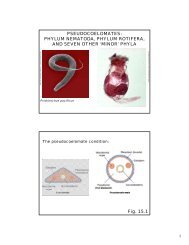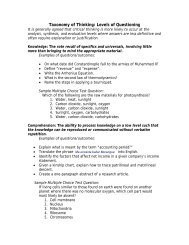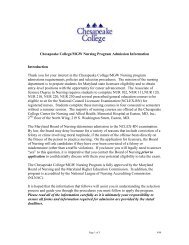Facilities Master Plan - 2012 - Chesapeake College
Facilities Master Plan - 2012 - Chesapeake College
Facilities Master Plan - 2012 - Chesapeake College
Create successful ePaper yourself
Turn your PDF publications into a flip-book with our unique Google optimized e-Paper software.
<strong>Chesapeake</strong> <strong>College</strong> January <strong>2012</strong> <strong>Facilities</strong> <strong>Master</strong> <strong>Plan</strong> UpdateAFFORESTATION / ENVIRONMENTAL LAND BANKAs the campus continues to develop and increase its impervious coverage, there will be the need to meetenvironmental requirements, particularly as it relates to afforestation requirements. The open space to the west ofthe Secondary Entrance Road (defined by the junction of Rt. 662 and 50) presents an opportunity to “bank” land tofulfill on-site afforestation requirements or to for the <strong>College</strong> to generate revenues by making land available to fulfillafforestation requirements for other development projects within the watershed. A significant portion of this landarea should be preserved for future afforestation and other environmental requirements. Because the <strong>College</strong>cherishes the open space image which is evident from eastbound Rt. 50 traffic, the <strong>Master</strong> Site <strong>Plan</strong> illustrateshow an afforestation land bank could be established on the south side of this triangular land area to still allow foropen vistas to the campus core.SUSTAINABILITYA number of campus projects, both building and site, have been described above to fulfill immediate and future<strong>College</strong> needs. There on college campuses nationwide toward more sustainable design and LEED certification.There is an opportunity on the <strong>Chesapeake</strong> <strong>College</strong> campus to employ sustainable practices wherever possible onany development project. These practices may include the use of recycled building materials, building materialsobtained locally (within 500 miles), site planning that takes advantage of solar orientation, accommodation of bicyclesas a transportation mode, green roofs and use of native and adapted plant materials that do not require irrigation toname a few.6-35


